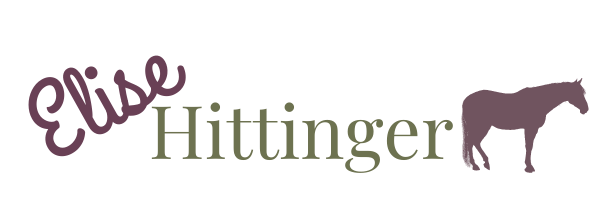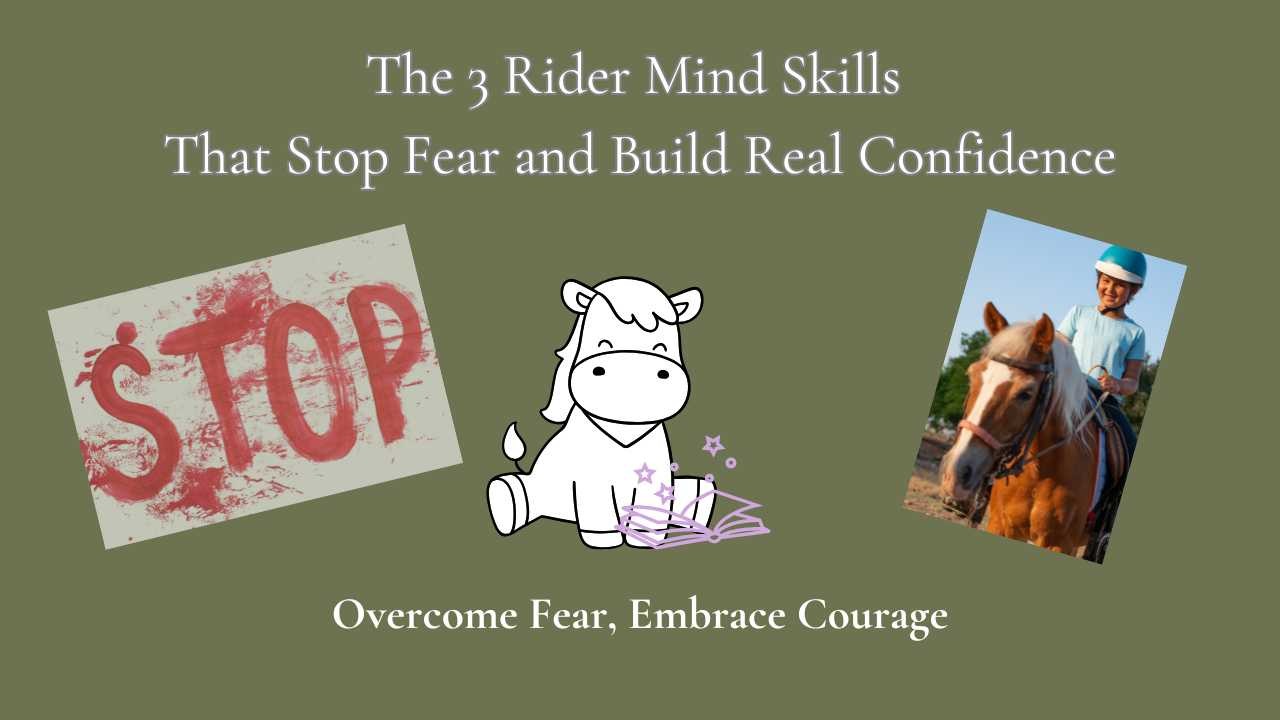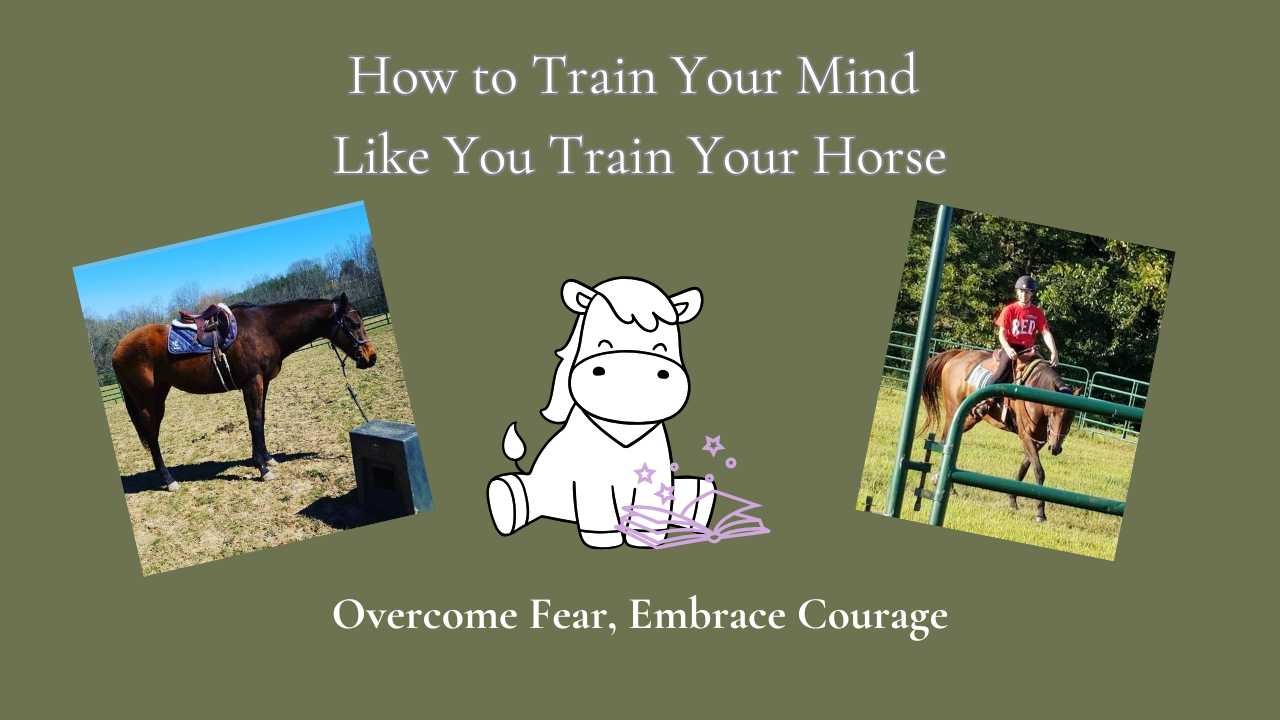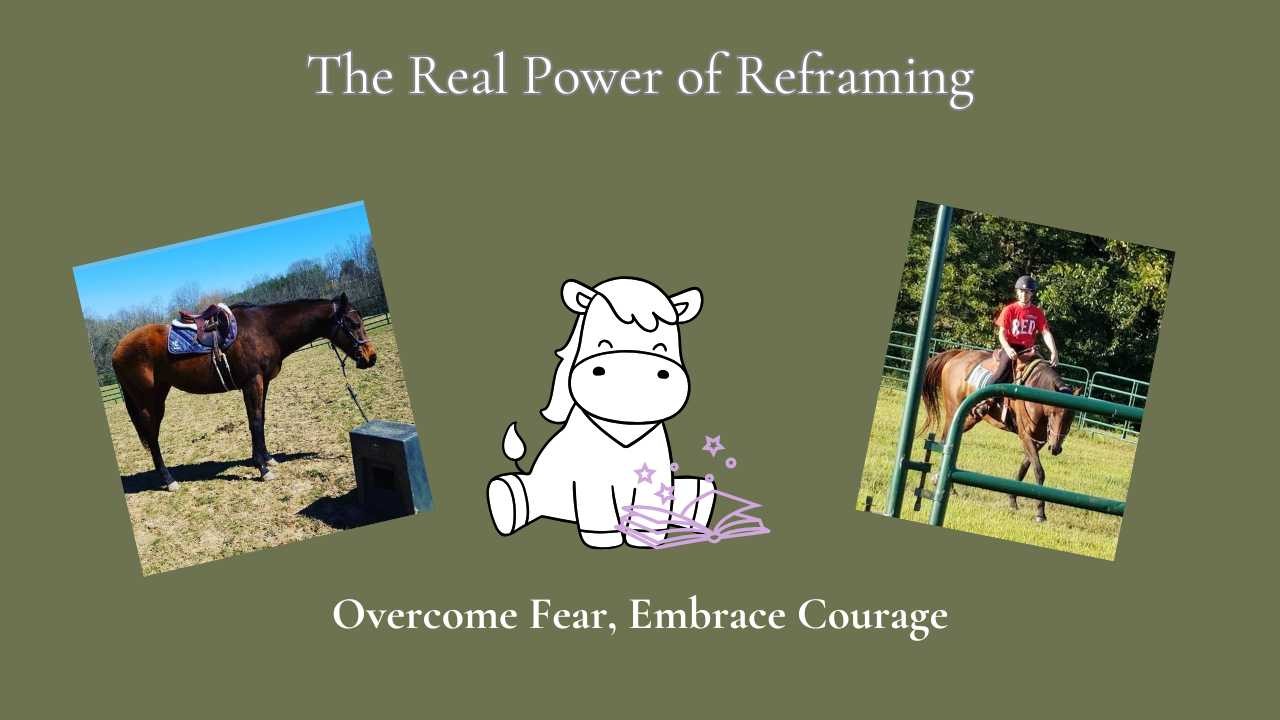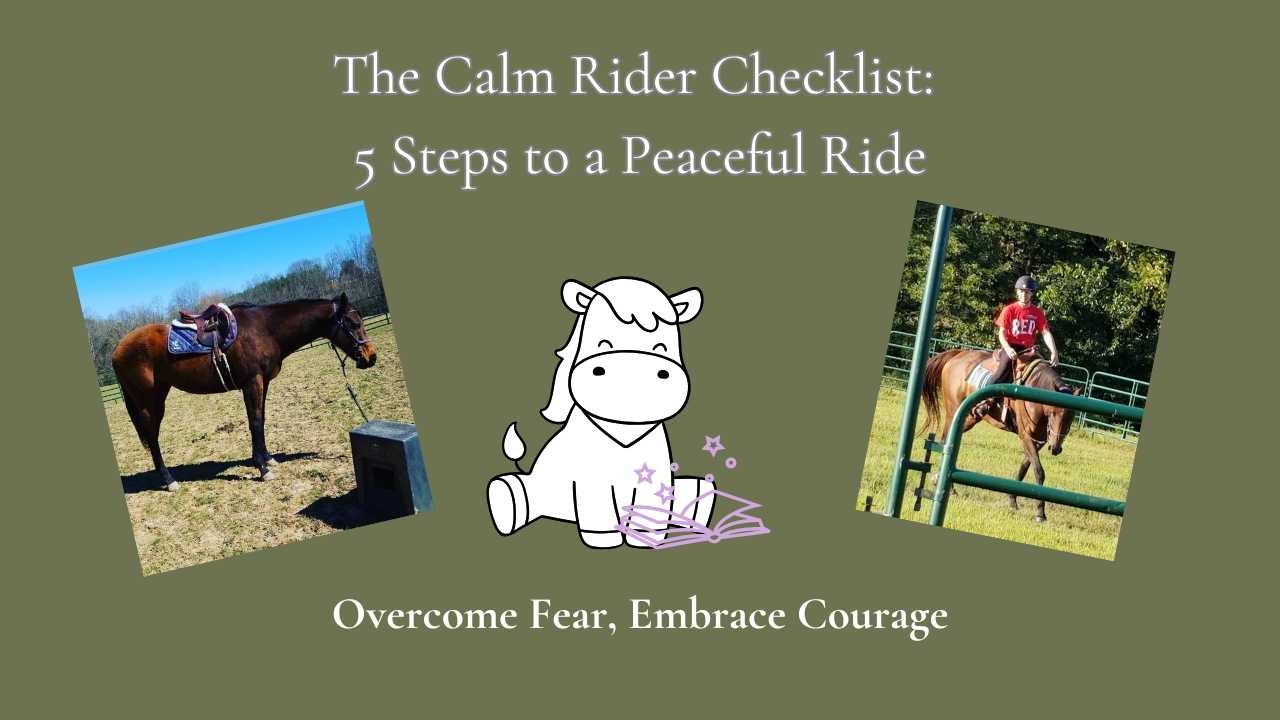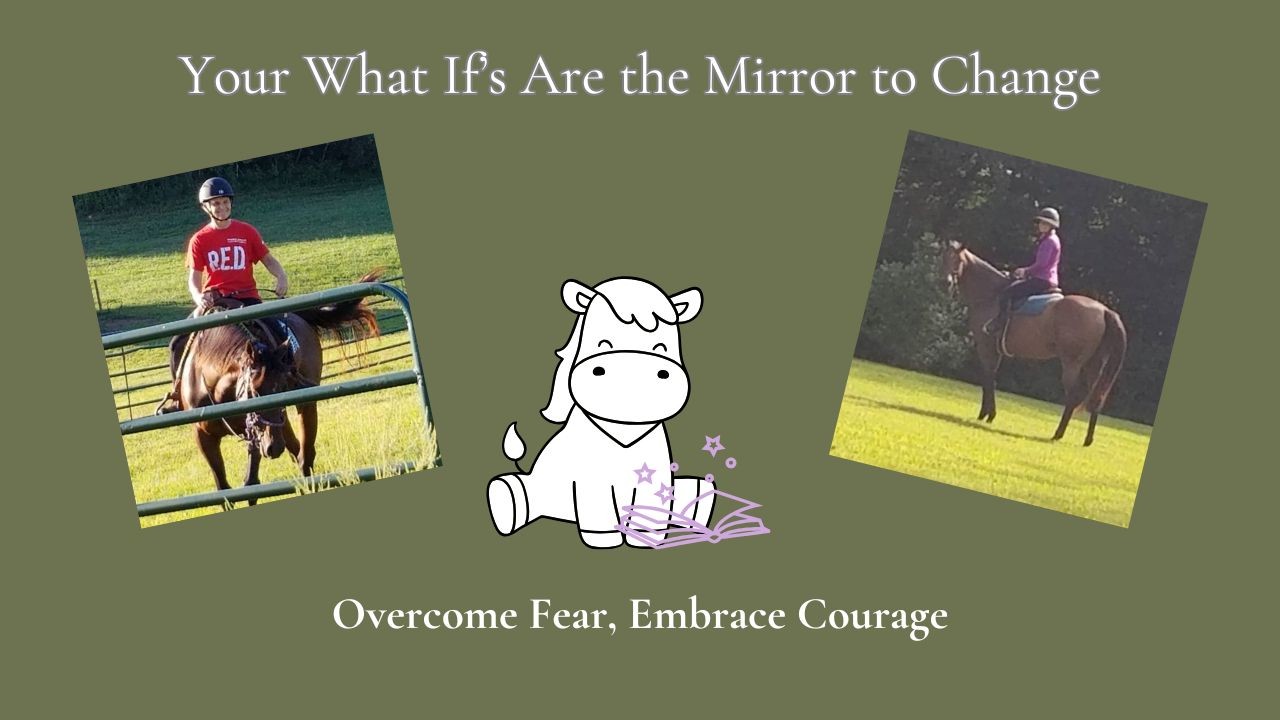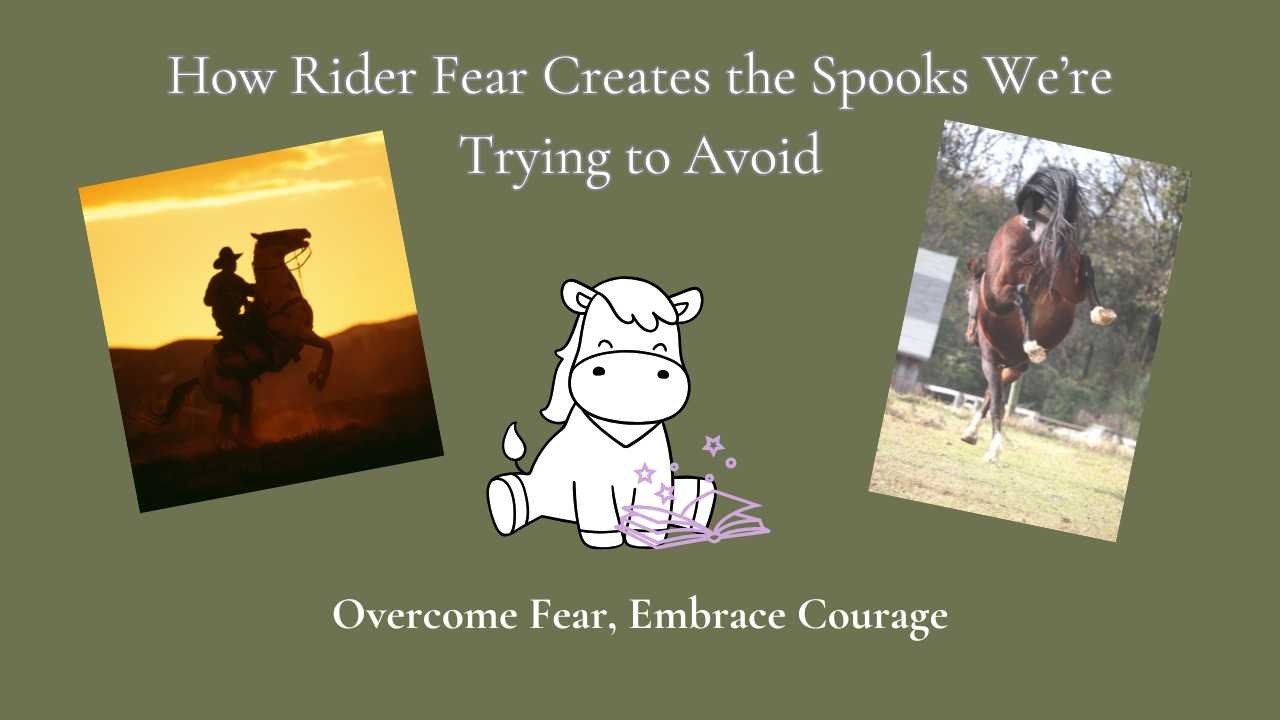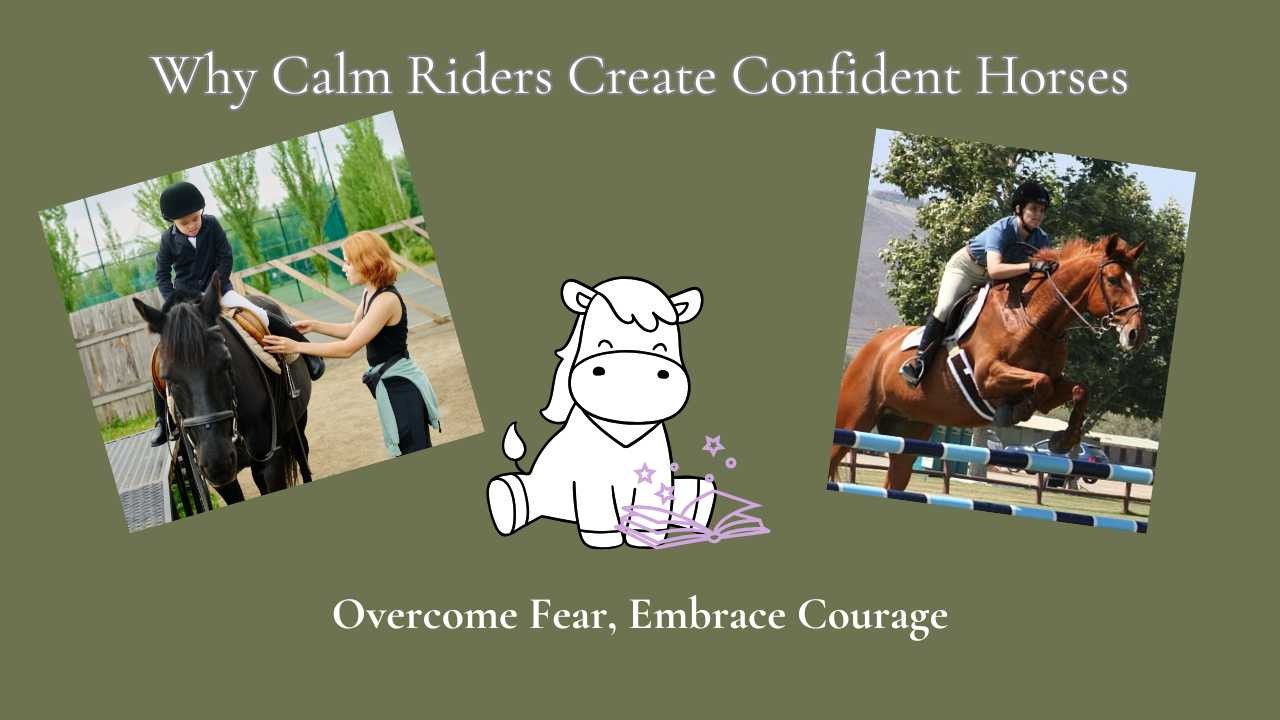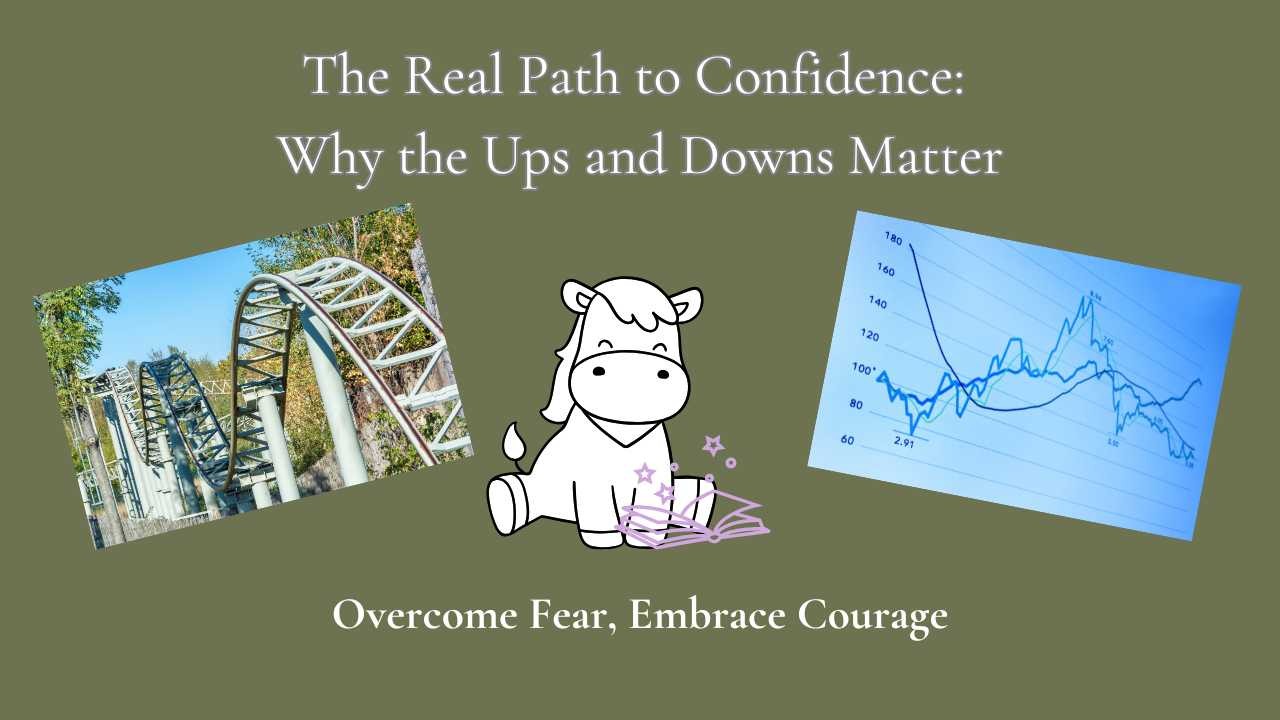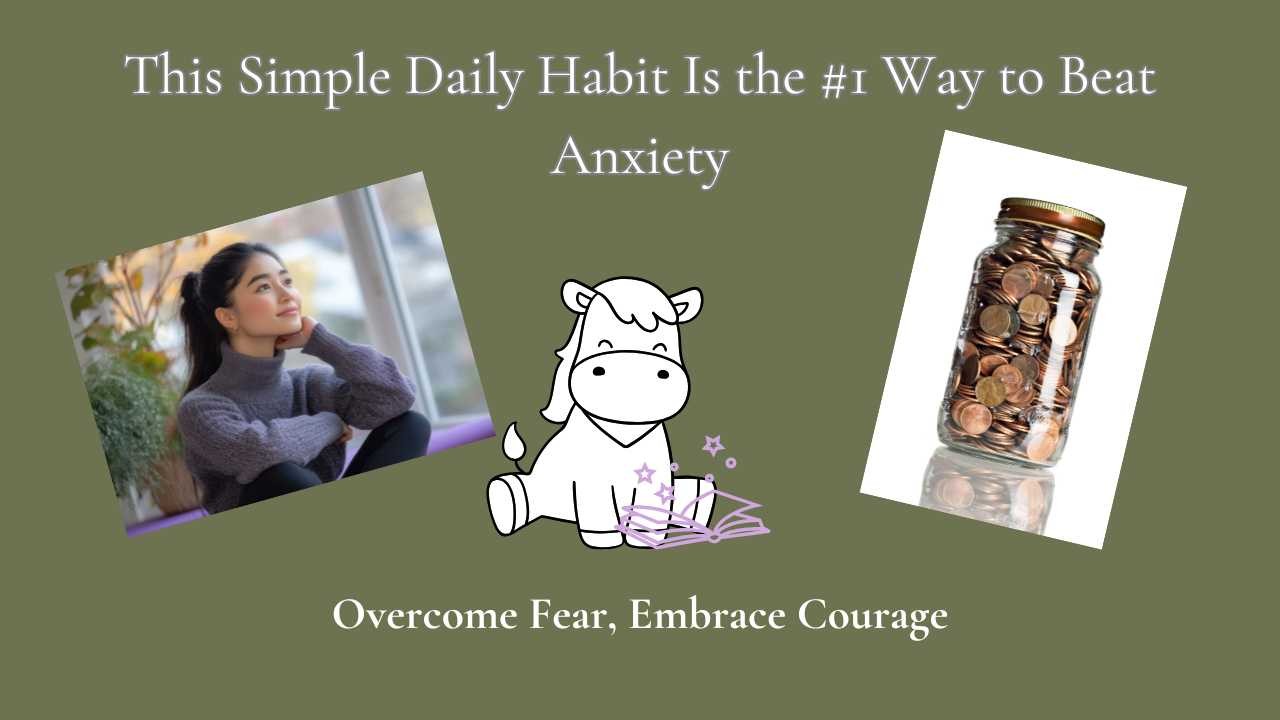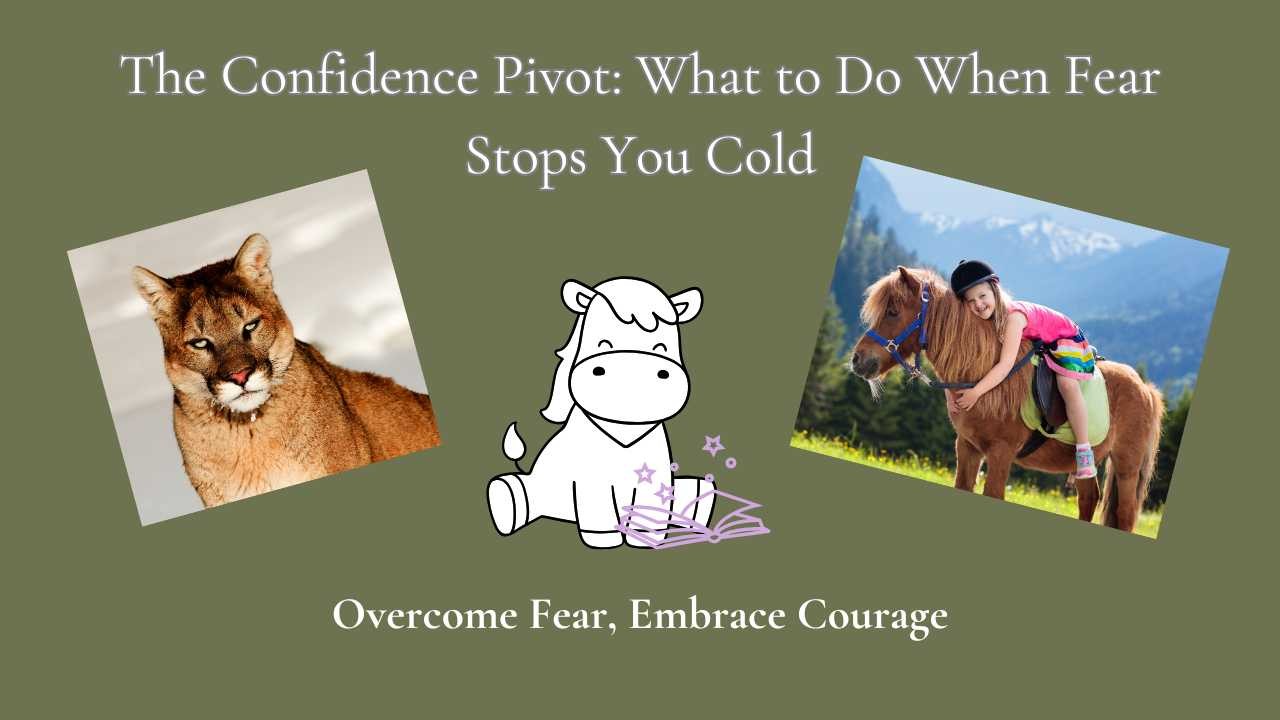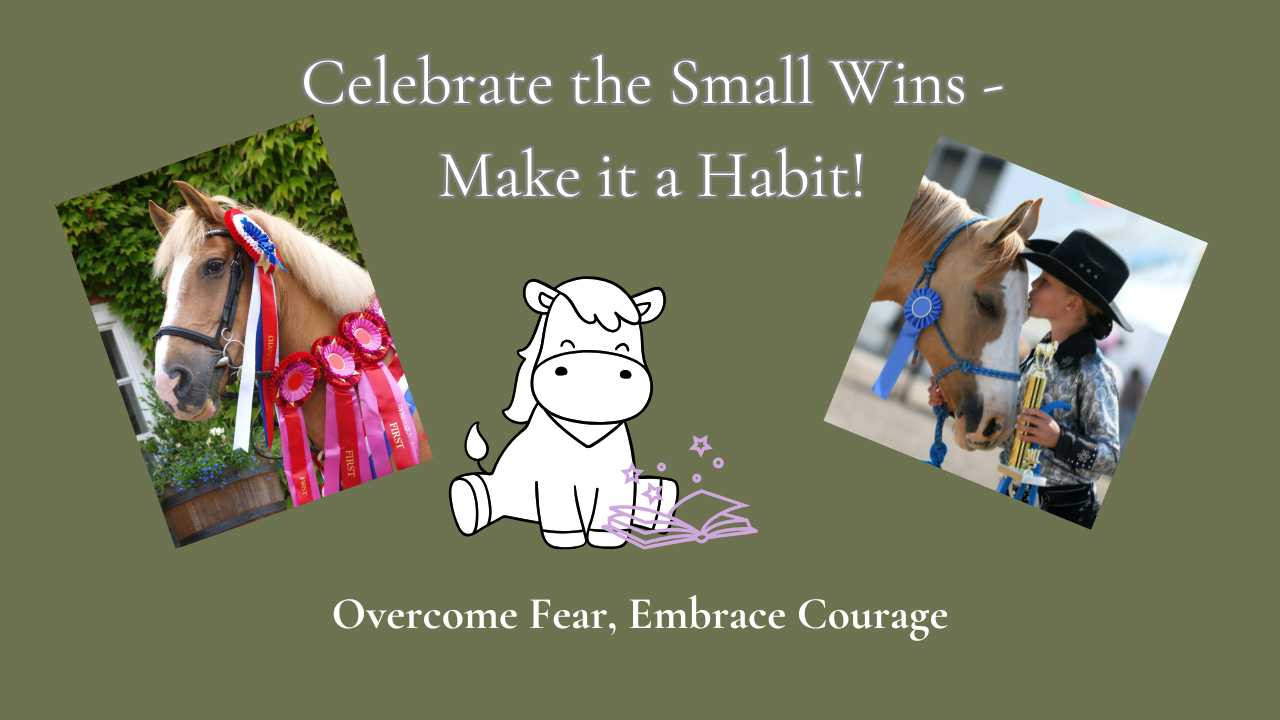
One of the fastest ways to grow your confidence—especially around horses—is to start celebrating the small wins.
I’m not talking about the big, flashy breakthroughs. I’m talking about the quiet moments you might miss:
- You and your horse take some deep breaths.
- You stayed calm even when they spooked.
- You showed up, even though part of you didn’t want to, or you didn't feel like it.
Those wins? They matter.
But noticing them isn’t always natural—especially if you're used to brushing past progress and pushing for more. So here’s how to turn celebration into a habit:
1. Celebrate in the Moment
When something goes right, pause. Smile. Let it register in your body.
Even better? Say it out loud:
Even better? Say it out loud:
“That’s it. That’s my win right there.”
This tiny moment of acknowledgment helps rewire your brain to notice the good more easily. And that changes everything—your energy, your confidence, and how your horse feels around you.
2. Write It Down
At the end of your session (or your day), take 30 seconds to jot down one small win.
You don’t need a fancy journal. A note in your phone or a scrap of paper works just fine.
You don’t need a fancy journal. A note in your phone or a scrap of paper works just fine.
Example:
“April 5: My horse stood still while I adjusted the girth. I didn’t rush. We both stayed calm.”
“April 5: My horse stood still while I adjusted the girth. I didn’t rush. We both stayed calm.”
This simple act helps you track progress and reminds you that you’re doing better than you think.
3. Build the Habit with a Cue
Want this to stick? Anchor it to something you already do. For example (Pick just one thing to anchor to):
- Think about your wins while pulling off your boots
- While brushing your horse's mane after a ride
- As you close the gate
Every time you hit that moment, ask yourself:
“What went well today?”
The more you ask, the more your brain starts to look for answers automatically—and that’s where the magic starts.
If you would like to hear more, listen to my latest podcast: The Magic of Small Wins
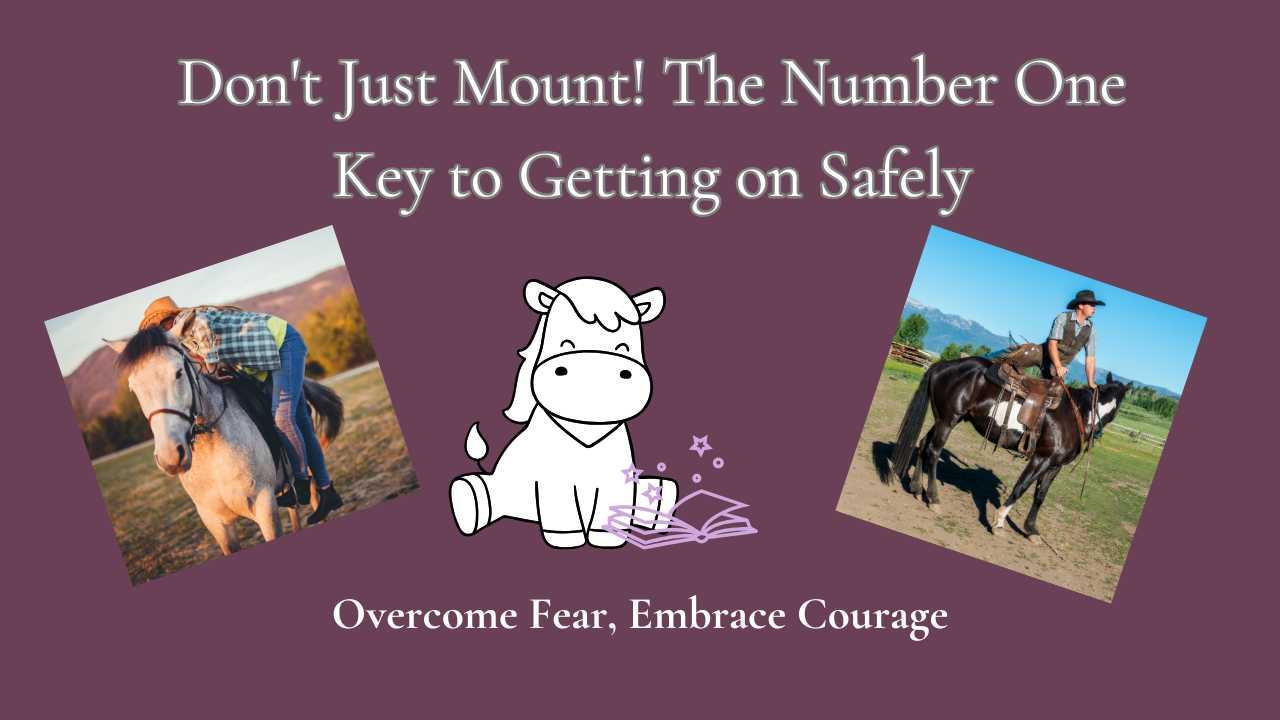
I cringe when I see people getting on horses while nothing about the situation is calm or relaxed. Maybe you’ve seen it too—or lived it. Tense rider. Fidgety horse. No one breathing. That used to be me, until I learned better.
Now, the very first thing I do with my horses is make sure they are standing quietly before I even think about getting on. And honestly? If all we do in a session is get calm and stand still for mounting—that’s a great session. No need to rush past that and miss something.
Having someone hold your horse is totally fine if your horse is already calm and it’s just for your anxiety. That’s a smart and supportive step. But if someone is holding your horse because it won’t stand still? You’re setting yourself up for bigger issues down the road or an accident now. You’re skipping the foundation.
And here’s the good news: this is one of the easiest things I’ve ever taught a horse, besides ground tying.
Let me paint the picture. I have off-the-track thoroughbreds. They’re used to fast, high-pressure situations—jockeys getting tossed on while the horse is already moving. So we’re not starting from zero calm. And still, this works.
Here’s what I do:
- Tack up like it’s a regular ride. I want them used to the full experience.
- Use the round pen fence. I sit up there and ask the horse to walk under me, like I’m going to mount. If they move, I gently ask them to back or move side to side a few times, then ask again. I repeat until they walk up and stand quietly under me from both directions.
- On the ground. I stand beside them like I would to mount—except I’m short and they’re tall, so we both pretend. If they move, we do a few steps of groundwork, then try again. I don’t give up until they stand still on both sides.
- Mounting block, trailer fenders, tree stumps—you name it. I do the same work from every mounting scenario I can find.
Some people mount from both sides once the horse is solid, and that’s great. But I stick with the left. It’s what feels easiest and safest for me, especially with anxiety in the mix. And easy is good.
The #1 KEY:
The horse must stand quietly for mounting.
That’s it. That’s the key.
If you’re struggling with riding confidence, anxious energy, or a horse that fidgets while you’re trying to get on—start here. Calm before climb. You’ll both feel the difference.
For additional mounting tips, listen to my latest podcast - Episode 95: Confident Mounting: 3 Essential Steps for Every Rider
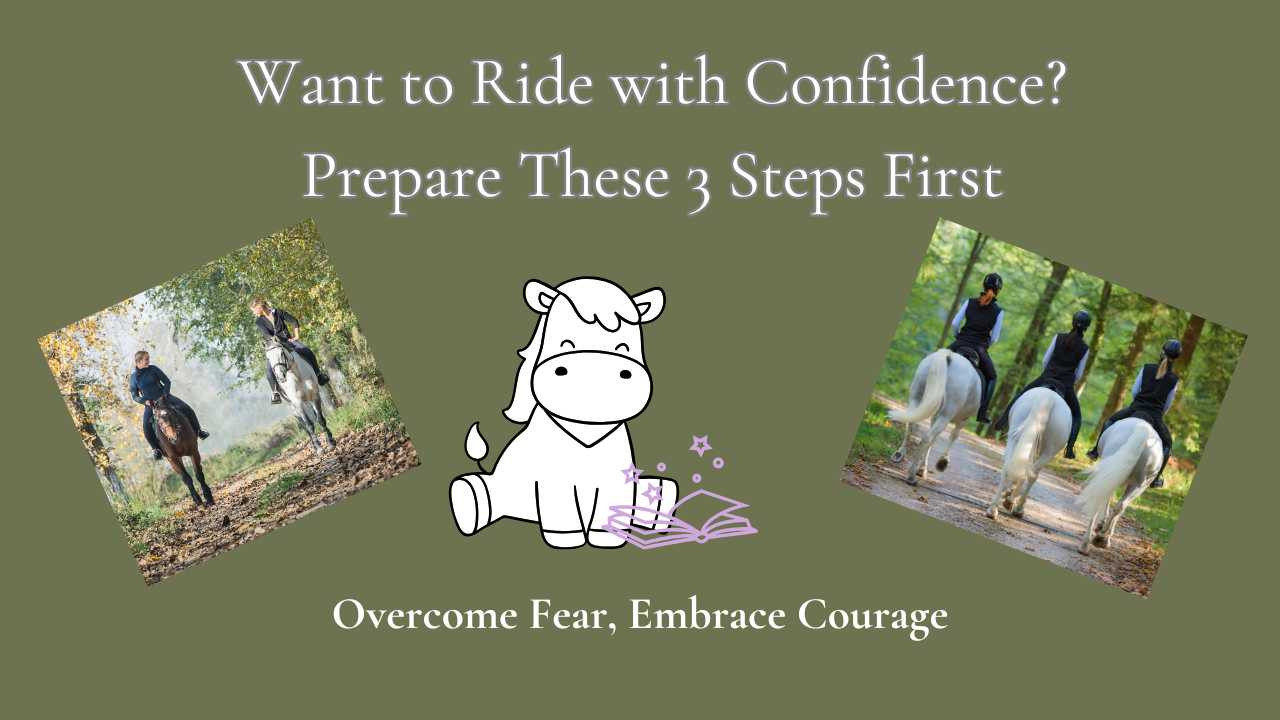
Fear often creeps in when we don’t know what to do next. It’s not just about being afraid of riding—it’s about the uncertainty of *how* to ride safely and confidently. That’s why preparation is everything. The secret to feeling confident in the saddle is knowing the steps ahead, and the best way to do that is by asking yourself three key questions:
1. Do I Have the Knowledge I Need?
Lack of knowledge creates fear. If you don’t understand your horse’s cues, how to handle unexpected situations, or what to do if something goes wrong, anxiety will take over. Knowledge gives you a mental map—a plan for what to do next. But it’s not just about reading books or watching videos; true understanding comes from applying what you learn.
Think of it like learning to swim. You can’t master it by reading about it—you have to get in the water. The same applies to riding. Learn, ask questions, and practice with guidance to build your confidence step by step.
2. Do I Have the Experience I Need?
Experience is the bridge between knowledge and confidence. You can study riding techniques all day, but until you do it, fear can still take hold. Each ride, each interaction with your horse, builds experience and trust. Start where you are—maybe that means groundwork, short rides, or practicing in a safe environment. The more experience you gain, the less fear will control you.
3. Do I Have the Health I Need?
Physical readiness plays a huge role in confidence. If you don’t feel strong enough, flexible enough, or balanced enough to ride comfortably, your body will tense up. That tension increases anxiety, making riding feel harder than it should. Working on core strength, flexibility, and overall health will make a noticeable difference in how secure and relaxed you feel in the saddle.
The Bottom Line: Prepare Your Steps
When you prepare by gaining knowledge, building experience, and improving your physical well-being, fear naturally takes a back seat. Instead of feeling overwhelmed by the unknown, you’ll have a clear path forward. So before you ride, ask yourself: "What’s my next step?" When you have the answer, confidence will follow.
My latest podcast, The Preparation Path, talks about this in detail of you would like to hear my thoughts. LISTEN HERE!
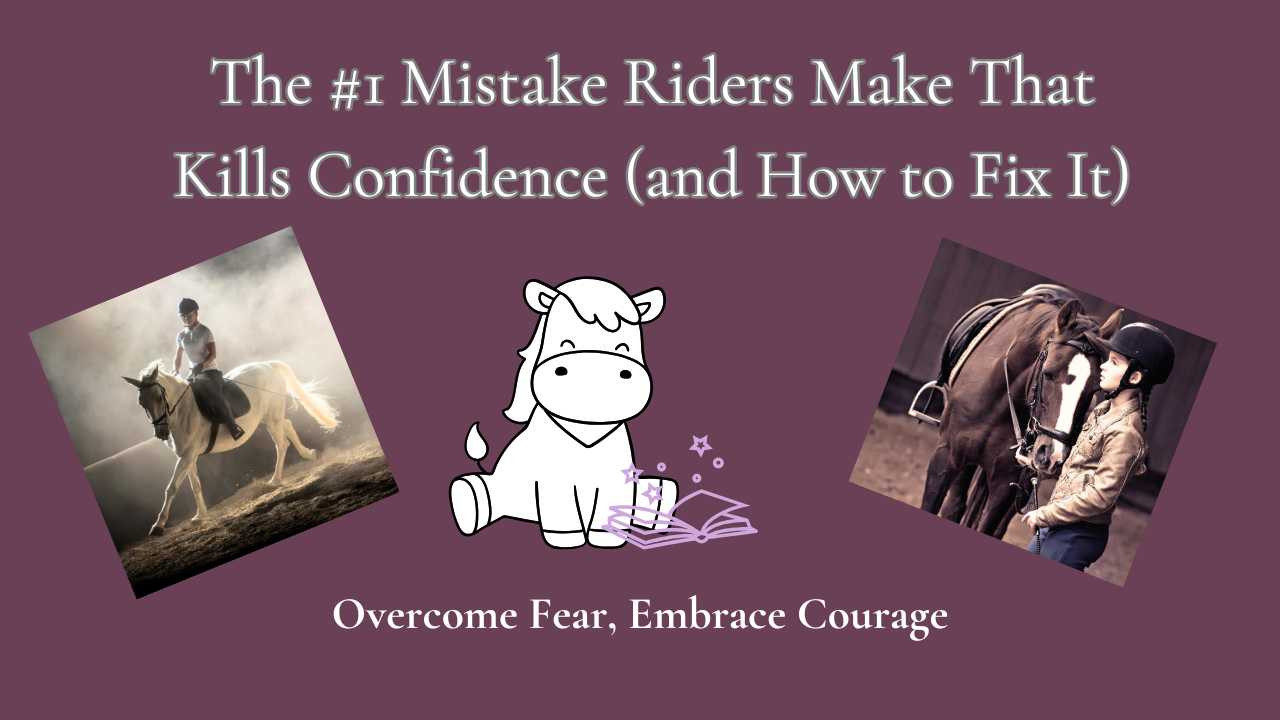
I led my horse up to the mounting block and stood there, frozen. I felt like I couldn't breathe—like a weight was pressing down on my chest. My palms were sweaty, my hands shaking. I had to admit it: I was TERRIFIED.
I had this dream—just get on and ride. It was a perfect day, the kind made for a peaceful ride around the edge of our property. Through the hay fields, where the air smelled sweet and fresh. Under the cool shade of the forest, past wildflowers lining the trail.
It was a beautiful vision. But the journey to get there felt impossible. I couldn’t do it. I couldn’t get on.
The Overwhelm of the “Big Picture” Is the Biggest Mistake Riders Make
It’s easy to get stuck staring at the destination, wondering how you’ll ever get from here to there. The gap between where you are and where you want to be can feel like a canyon. But here’s the secret: you don’t have to jump the canyon. You just have to take the next step.
When we focus too much on the big goal—whether it’s getting back in the saddle, conquering fear, or mastering a new skill—it can paralyze us. Our brains crave certainty, and when they don’t see a clear, easy path, they throw up roadblocks: doubt, anxiety, hesitation.
But riding, like life, isn’t about making one giant leap. It’s about taking one small step, then another, then another.
How to fix it: Find Joy in the Process
Instead of worrying about the whole journey, zoom in on today. What’s the next thing you can do? Maybe it’s grooming your horse while taking deep breaths. Maybe it’s sitting in the saddle for just five minutes, focusing on feeling steady. Maybe it’s simply visualizing yourself riding with confidence.
When I finally embraced this, I got on. I took four steps. It felt amazing. I smiled for a week.
When you shift your focus from the overwhelming end goal to the manageable present moment, riding becomes more enjoyable. You start to celebrate small victories, build momentum, and before you know it, you are riding with confidence—not because you forced it, but because you allowed yourself to grow into it.
So, take a deep breath. You don’t need to be ready for the whole ride today. Just take the next step.
Your journey to confidence isn’t about the destination—it’s about enjoying each moment along the way.
If you would like to hear more, I talk about "Know the Next Step" in my latest blog you can listen too here!
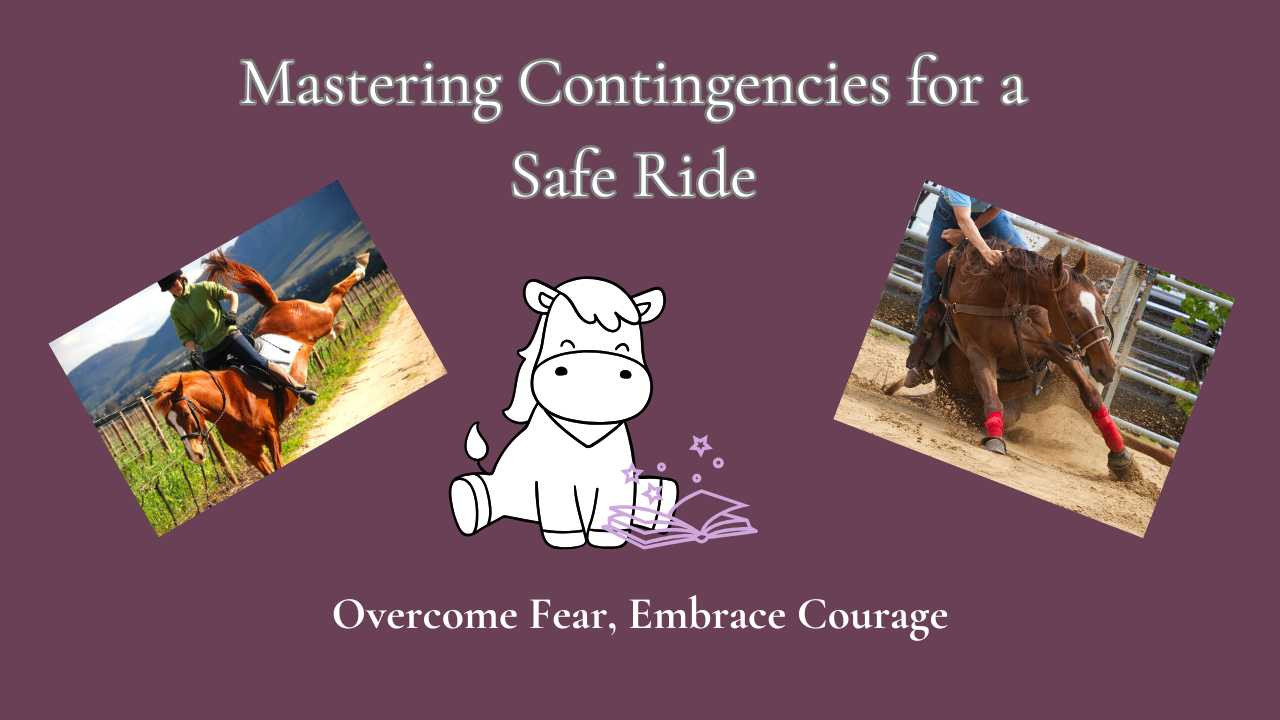
Ever wondered how professional equestrians manage unexpected situations with grace and confidence? The secret lies in preparation. In our latest podcast episode, "Build the Safety Net" we dive into the crucial steps every rider should take to ensure they're ready for any contingency. After my accident, I realized just how unprepared I was—not just for that moment, but for any contingency.
I cannot stress enough the importance of preparing yourself and your horse for unexpected situations. I am going to focus on you since I am not a horse trainer, but both of you should be prepared.
Preparing Yourself for Contingencies
- Mental Preparation: Know what you will do in any of the situations that scare you. Know what you will do when your horse rears, bucks, bolts, spooks, etc. Have that mental plan and feel confident that it is solid.
- Physical Readiness: There are two parts to this. First, make sure you are as healthy as you can be, good balance, strength and flexibility are important to reduce anxiety and be able to handle any situation. The second part is to practice what you will do. With your horse standing still, practice what you will do if the horse rears. For me, I would use one rein and gently pull it off to one side so the horse comes down off balance and moving into a circle, and I can do this while standing still or walking. Whatever plan you have, practice that plan.
Preparing Your Horse for Contingencies
- Work with a professional on this one. There are so many things that can be done to help your horse remain calm during any situation.
- Building Trust between you and your horse so your horse sees you as the leader. Hint, you can't do this and be timid. You have to step up and show the horse you are leader worthy.
Practicing Dismounting and Falling
- Safe Dismounting: Practice dismounting. If you have physical limitations, this may hold you back, work to improve those physical limitations. ’m lightning-fast at dismounting, and you should be too! Also, know when to dismount and when not to. This decision is personal, but you should have a clear plan for when to stay on and when to dismount.
- Controlled Falling: there are classes you can take to fall safely. I did some off a mechanical bull and learned a lot. I have also done it off a moving golf cart.
By preparing yourself and your horse for contingencies, you can ride with confidence, knowing you're ready for whatever comes your way. Want help getting started? Here’s my contingency plan to guide you! Grab the Guide HERE!
